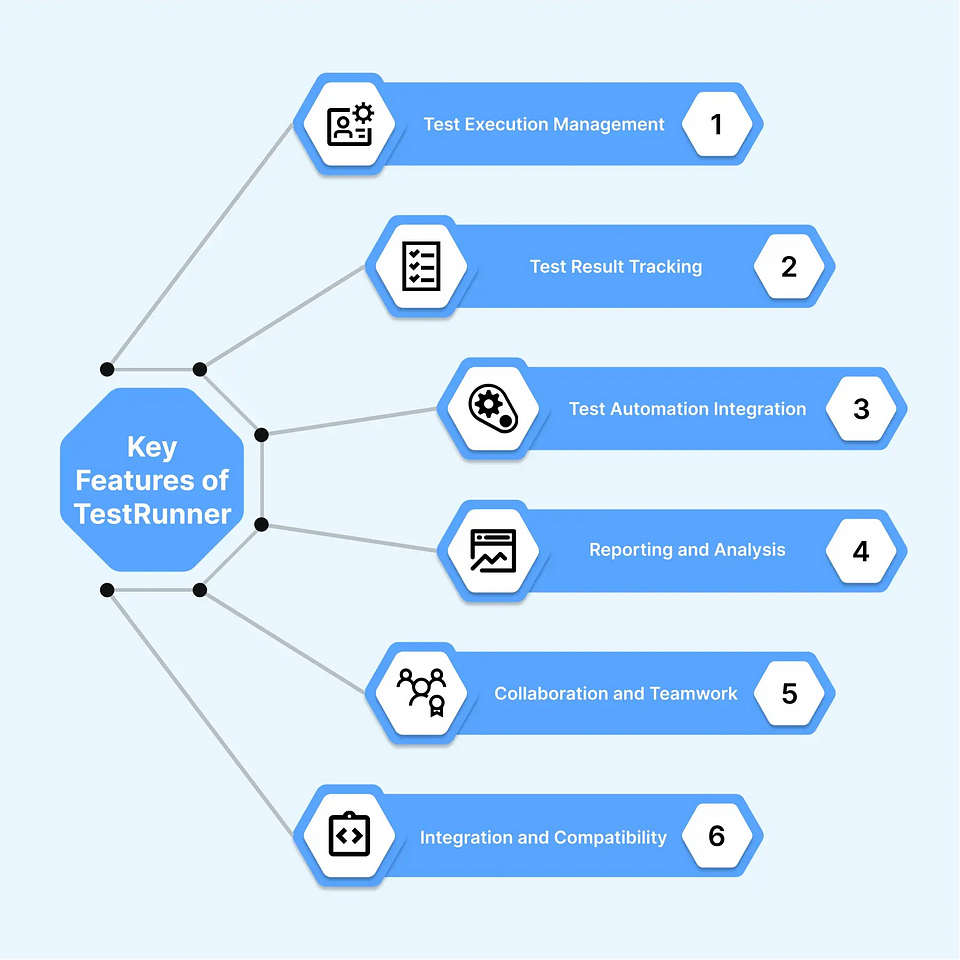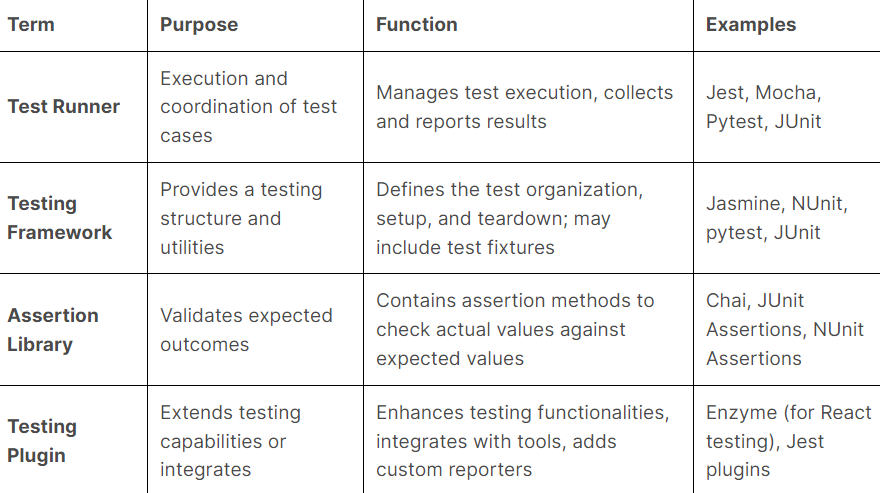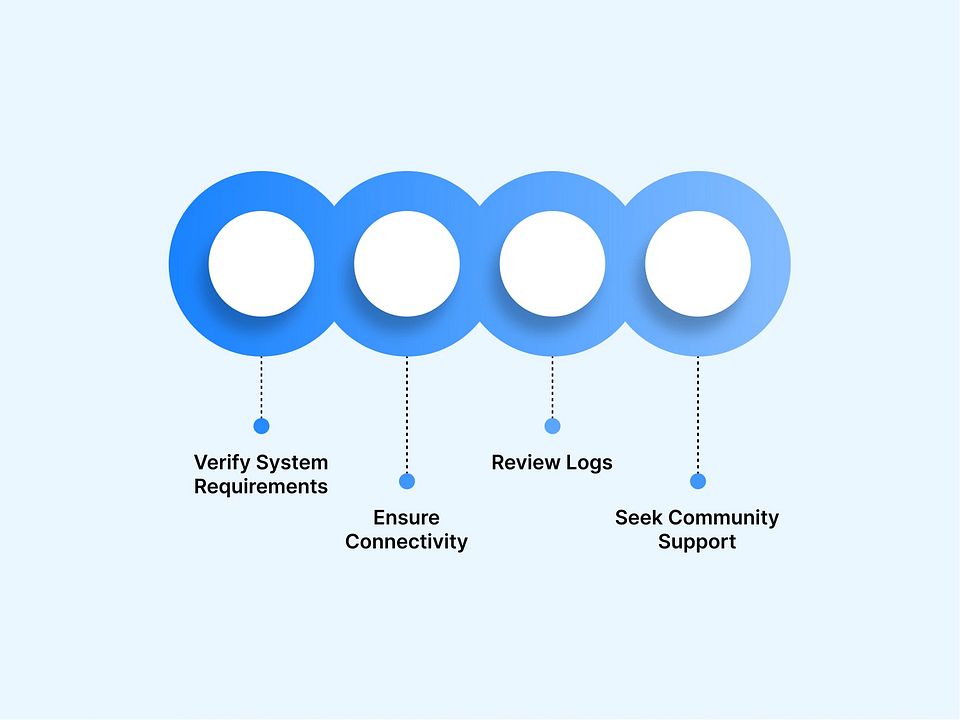OVERVIEW
In the rapidly evolving landscape of software development, ensuring the quality and reliability of your applications is paramount. Effective testing methodologies and tools play a vital role in achieving this goal. One such powerful tool that has gained significant popularity among testers and developers is TestRunner. In this comprehensive article, we will explore the ins and outs of TestRunner, its key features, benefits, implementation best practices, and much more. So, let’s dive in and discover how TestRunner can empower your software testing efforts.
What is TestRunner?
TestRunner is an advanced testing tool that aims to enhance and simplify software testing. With its comprehensive platform for managing test cases, automating repetitive testing processes, and producing valuable reports, it caters to the requirements of software testers, developers, and quality assurance professionals. By optimizing application quality and streamlining testing efforts, TestRunner contributes significantly to saving time and resources.
Why to Use TestRunner?
TestRunner is used to automate the execution and management of software test. It helps ensure the reliability and quality of software by running tests in a systematic and organized manner, providing detailed reports, and facilitating efficient debugging and error identification.
How Does TestRunner Work?
TestRunner functions using a client-server architecture. The server component is responsible for hosting the test management system, while the client component allows testers to run tests and interact with the system. These two components work together seamlessly, ensuring effective management, execution, and reporting of test cases.
Transform your HTML code effortlessly with our HTML to YAML converter.
Benefits of Using TestRunner
Experience the advantages of using TestRunner for software testing teams and organizations. Discover how TestRunner can revolutionize your testing process:
Optimize Efficiency: Streamline and expedite your testing process with TestRunner’s intuitive interface and powerful features. Execute test cases swiftly and effortlessly, saving valuable time and resources.
Achieve Comprehensive Test Coverage: Ensure thorough testing across diverse application scenarios and environments. TestRunner’s robust test management capabilities enable you to create and manage test cases effectively, leaving no aspect of your software untested.
Foster Collaboration: TestRunner serves as a centralized platform for seamless team collaboration. Easily share test artifacts, communicate with team members, and promote knowledge sharing, leading to improved coordination and more efficient workflows.
Harness Automation: Empower your testers with TestRunner’s automation capabilities. Automate repetitive tasks, such as regression testing and data validation, freeing up time to focus on complex testing scenarios that require human expertise.
Gain Valuable Insights: TestRunner goes beyond basic reporting. It provides comprehensive reports and analytics that offer actionable insights into test results, trends, and areas for improvement. Use this information to enhance your testing strategy and drive continuous improvement.

Need a quick conversion? Use our XML to TSV tool for fast results.
Types of Test Runners
Test runners are tools or frameworks that facilitate the execution of automated tests. They provide an environment to run test cases and report the results. Depending on the programming language and testing framework being used, different types of test runners may be available. Here are some common types of test runners:
Command-Line Test Runners: These test runners are executed from the command line interface (CLI) and are typically used for running tests locally or as part of a build process. They provide a way to specify test files or directories and execute the tests. Examples of command-line test runners include nose for Python, JUnit for Java, and Mocha for JavaScript.
Integrated Development Environment (IDE) Test Runners: Many modern IDEs come with built-in test runners that allow developers to run tests directly from their development environment. These test runners provide a graphical user interface (GUI) to select and run tests, view test results, and navigate through the test suite. Examples of IDE test runners include Visual Studio’s Test Explorer, Eclipse’s JUnit runner, and PyCharm’s test runner.
Continuous Integration (CI) Test Runners: CI test runners are designed to be used in a continuous integration or continuous delivery (CI/CD) pipeline. They enable automatic execution of tests whenever new code is committed to a repository. CI test runners integrate with popular CI tools like Jenkins, Travis CI, or GitLab CI/CD. Examples of CI test runners include JUnit for Java, pytest for Python, and JUnit for JavaScript.
Browser Test Runners: These test runners focus specifically on running automated tests for web applications in various browsers. They provide capabilities to launch different browsers, execute tests in parallel, and capture test results. Examples of browser test runners include Selenium WebDriver (with language-specific bindings like Selenium-Java or Selenium-Python), Cypress, and TestCafe.
Distributed Test Runners: Distributed test runners allow you to distribute test execution across multiple machines or nodes, enabling faster test execution and parallelization. They manage the distribution of tests and collect results from each node. Examples of distributed test runners include JUnit with parallel test execution, TestNG for Java, and pytest-xdist for Python.
Cloud-Based Test Runners: Cloud-based test runners provide an infrastructure for running tests on cloud platforms. They allow you to execute tests in a scalable and distributed manner, leveraging cloud resources. Cloud test runners often integrate with popular cloud providers.
Convert YAML to CSV easily with our free online tool.
Key Features of TestRunner
TestRunner is a robust software tool designed to facilitate efficient and effective testing processes within various software development environments. It offers several key features that contribute to its value and effectiveness in streamlining the testing phase of software projects.
Test Execution Management: TestRunner allows users to manage and execute test cases with ease. It provides a user-friendly interface to define, organize, and prioritize test cases based on specific requirements and project objectives. Through TestRunner, users can schedule and execute tests, ensuring comprehensive coverage and reliable results.
Test Result Tracking: TestRunner provides a systematic approach to track and monitor test results. It enables users to record and analyze the outcomes of executed test cases, including pass/fail statuses, error messages, and other pertinent information. This feature assists in identifying and addressing software defects and performance issues, contributing to enhanced overall software quality.
Test Automation Integration: TestRunner seamlessly integrates with test automation frameworks and tools, enabling users to automate repetitive and time-consuming test scenarios. By leveraging this feature, organizations can significantly accelerate their testing processes, reduce manual efforts, and achieve greater efficiency in delivering high-quality software products.
Reporting and Analysis: TestRunner offers comprehensive reporting capabilities to generate detailed test reports. These reports provide valuable insights into the testing progress, results, and overall software quality. The ability to analyze test data and metrics empowers stakeholders to make informed decisions, identify areas for improvement, and assess the readiness of software for deployment.
Collaboration and Teamwork: TestRunner facilitates effective collaboration among team members involved in the testing process. It allows users to share test cases, test data, and test results, fostering seamless communication and knowledge sharing. This feature promotes teamwork, enhances coordination, and supports a unified approach to testing within software development teams.
Integration and Compatibility: TestRunner seamlessly integrates with popular development and testing tools, ensuring compatibility and interoperability. It can be easily integrated into existing software development workflows, supporting various methodologies such as Agile or DevOps. This feature enables organizations to leverage their existing toolset while benefiting from TestRunner’s powerful testing capabilities.

Getting Started with TestRunner
To commence using TestRunner, please adhere to the following professional guidelines:
Install TestRunner
TestRunner is a test framework for various programming languages. You’ll need to install the appropriate version for your chosen language. Here’s how you can install TestRunner for some popular languages:
Python: Install TestRunner using pip by running the following command in your terminal:
pip install TestRunner
JavaScript: Install TestRunner using npm by running the following command in your terminal:
npm install test-runner --save-dev
Set Up the Server
Proceed by installing and configuring the TestRunner server component on a dedicated machine or a cloud-based infrastructure, ensuring it meets the necessary requirements for optimal functionality.
Decode your tokens securely with our JWT Decoder. Try it now!
Create a Test File
Once TestRunner is installed, create a new file where you will write your test cases. The file name convention often includes “test” to indicate that it contains tests, such as test_example.py or ExampleTest.java.
Write Test Cases
In your test file, start writing your test cases using the TestRunner syntax. Test cases typically consist of setup code, the actual test code, and assertions to verify the expected results. The exact syntax may vary depending on the programming language you’re using. Here’s an example of a test case in Python using TestRunner:
from TestRunner import TestCase, eq
class ExampleTest(TestCase):
def test_addition(self):
result = 2 + 2
eq(result, 4)
Run Tests
Once you have written your test cases, you can run them using the TestRunner command-line interface (CLI) or your preferred test runner tool. The specific command to run tests will depend on the programming language you’re using. Here are a few examples:
- Python: Use the following command in your terminal:
python -m TestRunner discover
- JavaScript (with npm): Update the test script in your package.json file and then run:
npm test
- Java (with JUnit): Use your preferred build tool (e.g., Maven or Gradle) to run the tests
Analyze Test Results
After running your tests, TestRunner will display the results, indicating which tests passed and which ones failed. Use this information to identify any issues or errors in your code and make the necessary fixes.
Iteratively Improve and Expand Tests
As you continue developing your project, you can add more test cases to cover different scenarios and edge cases. Regularly running your tests will help ensure that your code remains functional and reliable.
Streamline your styles with our CSS to LESS converter.
TestRunner Best Practices
To optimize the advantages offered by TestRunner, it is recommended to adhere to the following set of best practices:
Establish a Clearly Defined Test Strategy: Develop a comprehensive test strategy that is well-defined and aligns with the organizational goals and objectives. This strategy should outline the approach and scope of testing activities.
Efficiently Organize Test Cases: Effectively categorize and organize test cases into logical groups based on their functional or business areas. Additionally, prioritize these test cases based on their criticality to ensure that the most vital aspects of the system are thoroughly tested.
Harness the Power of Automation: Identify repetitive testing tasks that can be automated and leverage TestRunner’s automation capabilities. Automating these tasks will help save time and effort, enabling testers to focus on more complex and critical aspects of the testing process.
Promote Collaborative Efforts: Encourage effective collaboration and communication among testers, developers, and stakeholders. This collaboration enhances the overall test coverage and efficiency by ensuring that all relevant parties are involved and their expertise is utilized effectively.
Regularly Analyze Test Reports: Continuously analyze the test reports generated by TestRunner. These reports provide valuable insights into the testing process, helping identify patterns, bottlenecks, and areas that require improvement. By analyzing the reports, you can make informed decisions to optimize the testing process and enhance its effectiveness.
By adhering to these best practices, organizations can maximize the benefits of TestRunner and ensure efficient and effective testing processes aligned with their objectives.
Difference between Test Runner, Testing Framework, Assertion Library, and Testing Plugin

Troubleshooting Tips for TestRunner
When encountering issues with TestRunner, consider the following troubleshooting tips:
Verify System Requirements: Prioritize the verification of your system’s compatibility with TestRunner by confirming that it meets the prescribed minimum requirements.
Ensure Connectivity: To facilitate uninterrupted communication, thoroughly validate the network connectivity between the TestRunner client and server components.
Review Logs: Carefully scrutinize the logs and error messages generated by TestRunner in order to identify any potential issues or misconfigurations that may be causing problems.
Seek Community Support: Take advantage of various online forums, user communities, and official support channels to seek assistance and engage in discussions with other TestRunner users. This enables you to benefit from their experiences and obtain valuable guidance.

TestRunner Case Studies
Several organizations have successfully implemented TestRunner and achieved notable results. Here are two case studies showcasing TestRunner’s impact:
E-commerce Website Testing: TestRunner was used to automate the testing of an e-commerce website. The test suite included scenarios such as user registration, product search and selection, adding items to the cart, and the checkout process. TestRunner executed these tests across multiple browsers and platforms, ensuring consistent functionality and user experience.
Mobile Application Testing: TestRunner was employed to automate the testing of a mobile application developed for iOS and Android platforms. The test suite covered various features such as user login, in-app purchases, push notifications, and navigation. TestRunner executed these tests on different devices and operating system versions, providing comprehensive test coverage.
API Testing: TestRunner was utilized to automate the testing of a RESTful API. The test suite included requests and responses verification, input validation, and error handling. TestRunner executed these tests on different endpoints and with varying inputs, ensuring the API’s functional correctness and adherence to specifications.
Regression Testing: TestRunner was implemented to automate the regression testing process for a software application. The test suite comprised a comprehensive set of test cases covering the application’s core functionality. TestRunner executed these tests after every code change, allowing quick detection of any regressions and ensuring the stability and reliability of the application.
Continuous Integration/Continuous Deployment Testing: TestRunner was integrated into a CI/CD pipeline to automate the testing of a web application. The test suite included unit tests, integration tests, and end-to-end tests. TestRunner executed these tests as part of the CI/CD process, providing immediate feedback on the code quality and preventing the introduction of bugs into the production environment.
These case studies illustrate the versatility and effectiveness of TestRunner in automating various types of testing scenarios, from web and mobile applications to APIs and continuous integration workflows.
Convert SQL to HTML instantly with our free tool.
Conclusion
Test Runner stands as a beacon of knowledge and inspiration for the testing community. With its insightful articles, expert advice, and innovative approaches, it has fostered a culture of continuous improvement in software testing. Nurturing a vibrant space where ideas flourish, it empowers testers to tackle challenges creatively and elevate their skills.
With the ever-increasing complexity of modern software applications, a robust and efficient test runner is paramount for ensuring exceptional software quality. LambdaTest emerges as a game-changer in the realm of Test Runner, offering developers a seamless testing experience across diverse environments.
The real device cloud provided by LambdaTest empowers developers to evaluate their application’s performance under real-world conditions, offering invaluable insights for optimization. This unique capability to test on real devices accelerates the testing process, leading to faster bug detection and swifter delivery of high-quality software.
